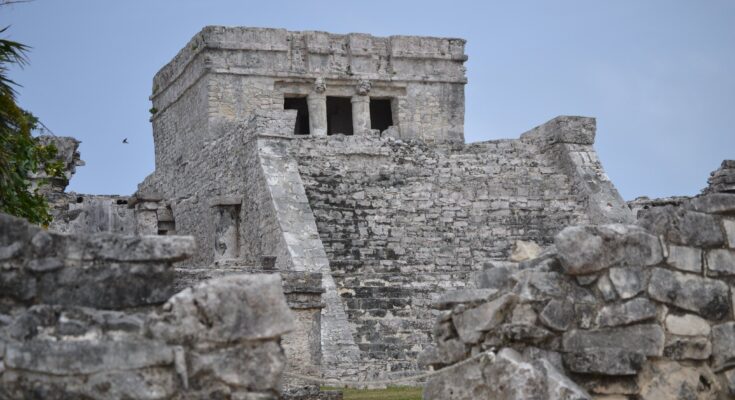Within the confines of a larger ancient Mayan city, archaeologists working in Campeche, Mexico, have discovered an underground structure beneath a Maya ball court, as well as sacred offerings atop a Maya pyramid at a different site.
The team of archaeologists found the unusual underground structure – which has painted walls – while they were excavating the ball court, the area dedicated to the ritual ball game the Maya and other Mesoamerican peoples played.
“We located parts of an earlier building that had painted walls, but only further excavations may reveal the shape of that underlying building and what its function was,” Ivan Šprajc, an archaeologist at the Institute of Anthropological and Spatial Studies in Slovenia and director of the excavation told Live Science.
#histoire #archéologie #Mayas #Mexique
Déouverte d'une structure souterraine maya sous un terrain de jeu de balle, à Campeche au Mexique— Evelyne Ferron (@EvelyneFerron) July 15, 2024
Adding that the finding is “evidently a very important structure, because ball courts are normally found only at major Maya sites, which were centers of the regional political organization.”
The structure – adorned by a layer of painted stucco – may date to the Early Classic period, 200 to 600 AD, according to a statement from Mexico’s National Institute of Anthropology and History.
Before now, Šprajc and his team surveyed a significant region of the Maya Lowlands in the Mexican state of Campeche with lidar, a method which beams millions of laser pulses from an aircraft. The pulses rebound from the ground and make their way back to the lidar machine in the aircraft, meaning researchers can map the landscape’s topography.
Another Mayan Discovery in Campeche
“We have found several ancient Maya settlements, with remains of residential buildings and temple pyramids,” Šprajc told Live Science. Last year, the research team discovered Ocomtún, a lost Maya city housing several large pyramids from the Maya Classic period. The site is in a previously unexplored area south of Ocomtún.
Within this site, the team came across multiple structures that resemble pyramids, towering over 15 meters (50 feet) in height. The archaeologists have given the site a name: Ocomtún, which means “stone column” in the Mayan language.
Furthermore, the cylindrical stone columns, which captivated the researchers and led to the naming of the site as Ocomtún, likely functioned as entrances to rooms located on the upper levels of the buildings.
As per Sprajc’s analysis, the site experienced notable transformations between 800 and 1000 AD. These changes occurred during a period preceding the eventual decline and collapse of the Lowland Maya civilization in the 10th Century.
The Maya civilization is one of the most remarkable societies in the Western Hemisphere. They gained renown for their majestic pyramid temples and grand stone structures, which once adorned the regions we now know as southern Mexico, Guatemala, and Belize, reported the BBC.



